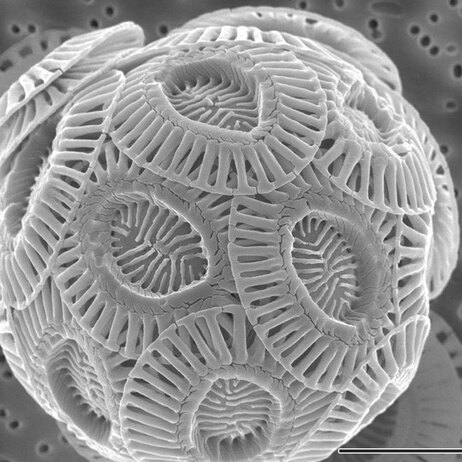From NPR's 'Krulwich Wonders...' - A science blog by Robert Krulwich (excerpt follows):
Find more posts at: http://www.npr.org/blogs/krulwich/
Read more..
"Chalk is composed of extremely small white globules. They look, up close, like snowballs made from brittle paper plates. Those plates, it turns out, are part of ancient skeletons that once belonged to roundish little critters that lived and floated in the sea, captured a little sunshine and carbon, then died and sank to the bottom. There still are trillions of them floating about in the oceans today, sucking up carbon dioxide, pocketing the carbon. Over the millennia, so many have died and plopped on top of each other, the weight of them and the water above has pressed them into a white blanket of rock, entirely composed of teeny skeletons. Scientists call these ancient plates "coccoliths." Technically, they are single-celled phytoplankton algae.
Chalk doesn't proclaim itself. It is usually out of view, buried in the ground below. Every so often, when a highway is being carved through a mountain, or when the sea and wind erode the side of a hill, that's when the green cover comes off, then you can see it. The White Cliffs of Dover are all chalk, piled hundreds of feet high."
Find more posts at: http://www.npr.org/blogs/krulwich/
Read more..

No comments:
Post a Comment